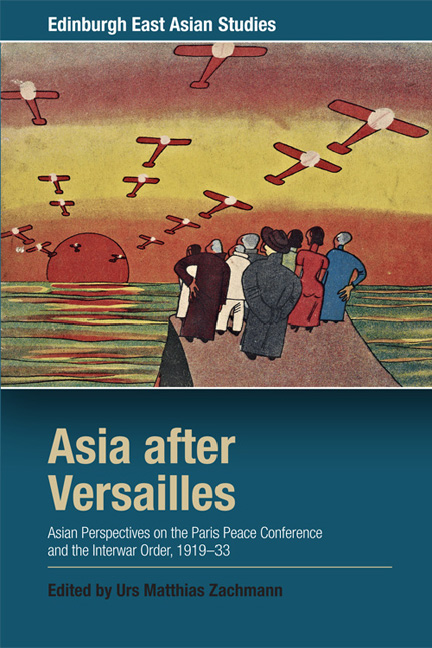 Asia after Versailles
Asia after Versailles from Part II
Published online by Cambridge University Press: 22 December 2017
On 16 December 1918, the American journalist Walter Duranty wrote for The New York Times:
‘It is far worse than when the Czar of Russia visited Paris – you would think every Parisian had determined not to rest happy until he had a close personal view of President Wilson.’ The speaker was a veteran gendarme attached to the force guarding the entrances of the Rue de Monceau where Prince Murat's house is situated, from the overcurious crowds…. Somehow the news had spread yesterday … that the president had been to church and would return at about noon. The result was an enthusiastic gathering before the police barriers – hundreds of people, quiet and well-behaved, in their Sunday clothes, but resolved not to leave the spot before the President had passed…. Suddenly, the boy on the outskirts of the crowd cried: ‘Le voila!’ as a limousine turned a corner. Hats came off, flags and handkerchiefs were waved, and the air rang with shouts of ‘Vive Wilson! Vive le President!’ Smiling with unaffected pleasure the Presidential party passed through the hedge of spectators down the street…. Not the least striking feature of the President's popularity is Parisians have learnt how to cheer in order to greet him properly…. There has been another change in the city during the last few weeks. Paris is recovering its old gayety…. Now with illuminations in Wilson's honor, confetti have reappeared on the boulevards, until the pavements are covered with the bright-hued jetsam.
The above reporting tells us many things: the symbolic linking of Wilson with the French aristocracy, the heroic stature of Wilson amongst Parisians, and added to this the evident smugness that even the French have had to change their old ways and learn to do things in an American way in order to please the President. Indeed, the media covered Wilson's activities with a paparazzi-like zealousness – such as reporting on Wilson being seen at the races, Wilson seen on his daily round of motoring in the Bois de Boulogne, and so on and so forth.
To save this book to your Kindle, first ensure [email protected] is added to your Approved Personal Document E-mail List under your Personal Document Settings on the Manage Your Content and Devices page of your Amazon account. Then enter the ‘name’ part of your Kindle email address below. Find out more about saving to your Kindle.
Note you can select to save to either the @free.kindle.com or @kindle.com variations. ‘@free.kindle.com’ emails are free but can only be saved to your device when it is connected to wi-fi. ‘@kindle.com’ emails can be delivered even when you are not connected to wi-fi, but note that service fees apply.
Find out more about the Kindle Personal Document Service.
To save content items to your account, please confirm that you agree to abide by our usage policies. If this is the first time you use this feature, you will be asked to authorise Cambridge Core to connect with your account. Find out more about saving content to Dropbox.
To save content items to your account, please confirm that you agree to abide by our usage policies. If this is the first time you use this feature, you will be asked to authorise Cambridge Core to connect with your account. Find out more about saving content to Google Drive.